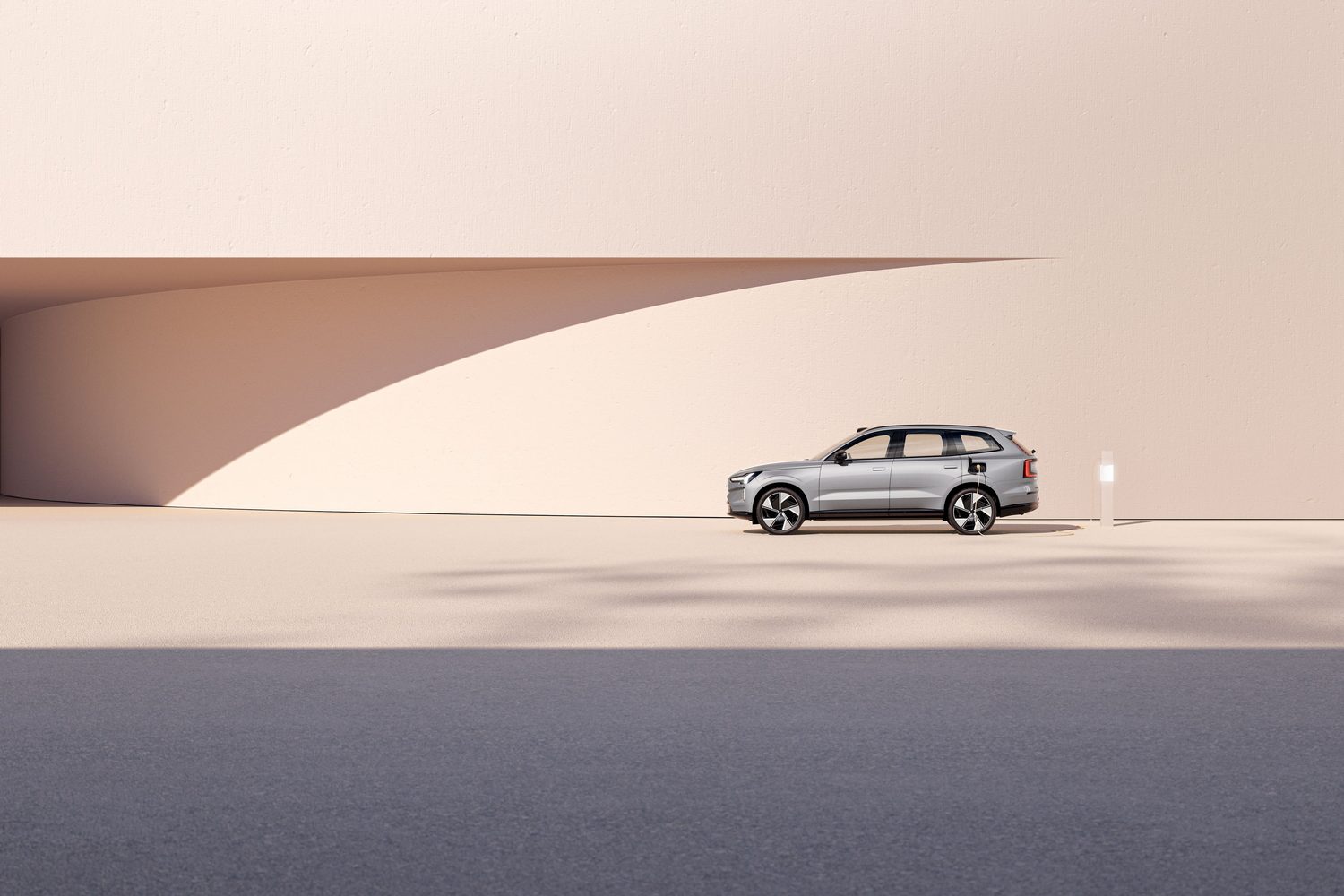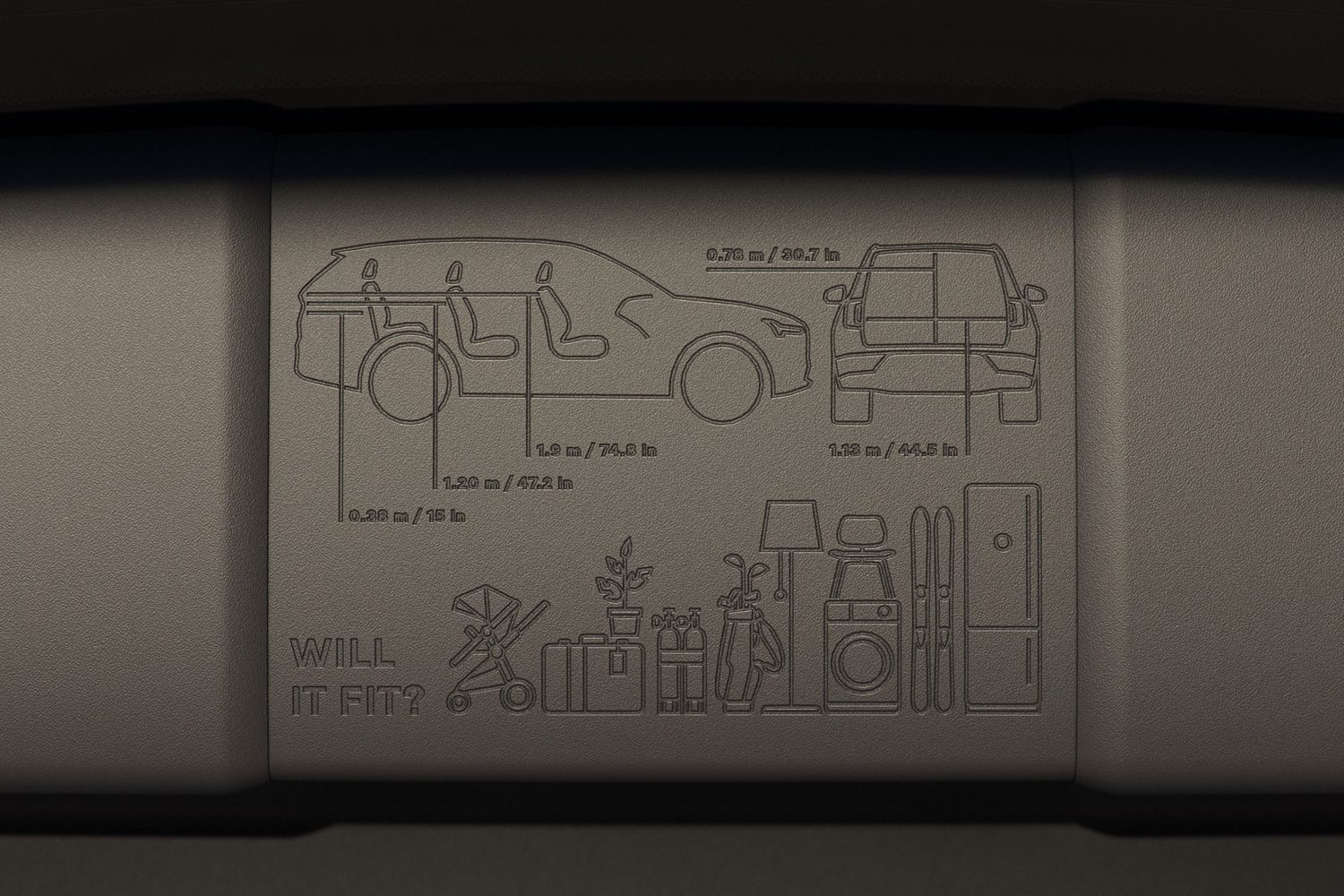Volvo has taken the covers off its all-electric replacement for the XC90. Say hello to the EX90, a seven-seat SUV with a range of up to 600 kilometres and initially offered with 517hp. The EX90 is the first in a series of new electric cars from Volvo, the Swedish brand promising to launch a new EV every year between now and 2030, after which it will only sell electric cars. The EX90 goes on sale in Ireland in 2023.
Familiar profile, smoother detailing
At a glance, the Volvo EX90 doesn't look drastically different to the XC90 before it, thanks to its large footprint and conventional "cab-back" stance. The electric SUV is all-new, however. Up front, there's a smooth and blanked-off look dominated by the Volvo badge. It's flanked by an extravagant new take on the "Thor's hammer" LED daytime running lights that have become a characteristic of all Volvos. For the EX90, these extend further into the lower apron and within the light unit itself the LED sections physically move to unveil the headlights behind when required.
Looked at from the side, the EX90 has a notably long rear overhang, the charging port is over the rear wheel on the left-hand side of the vehicle, there are flush-fitting door handles and a distinctive protrusion over the windscreen. The latter houses the lidar sensor, part of an extensive suite of such technology - more on that below.
Seven-seat cabin looks slick
The EX90 retains the XC90's seven-seat layout, but the rest of the cabin is all new. It's dominated by an upright 15-inch central touchscreen with Google and 5G connectivity built in. Volvo is particularly proud of the computing power behind this and the car's safety systems, as it features the Qualcomm Technologies Snapdragon' Cockpit Platform and even graphics technology developed by Epic Games.
A widescreen digital display in front of the driver takes care of the instrumentation and there's a head-up display system, too. Volvo has also confirmed that phone key technology will be standard across the EX90 line-up, allowing owners to use their smartphone to automatically unlock the car as they approach.
Audiophiles will be excited by Volvo's first use of Dolby Atmos, built into the Bowers & Wilkins audio system featuring 25 speakers, some of which are embedded in the car's headrests.
In terms of practicalities, there appears to be a vast amount of space between the two front seats and a flat floor behind for the second-row passengers. The photographs reveal ISOFIX mounting points in the outer two seats. Volvo hasn't confirmed how much luggage the EX90 will accommodate, but some of the interior dimensions revealed include 1.13 metres width, 0.78 metres height and up to 1.9 metres in length - when measuring from the rear hatch to the backs of the front seats. The EX90 also features a sizeable under-bonnet ("frunk" if you're American) storage area.
High-performing EV powertrain
Though further examples of the EX90 are expected in time (and don't rule out the possibility of hybrid and plug-in hybrid variants), Volvo has only released details of a high-specification launch version. It gets two electric motors for all-wheel drive, putting out maximums of 517hp and 910Nm of torque. Using a 111kWh battery pack, the range between charges (said to take as little as 30 minutes on DC for the 10-80 per cent benchmark) is quoted as 600 kilometres.
Volvo is packing the EX90 with hardware for the future, too, some of which will be enabled for use by later over-the-air updates. Niceties such as "Plug & Charge" (where you just plug the car into a suitable charger and it automatically sorts out the payment without any other input needed) and bi-directional charging (allowing use of the car's battery to charge up external devices, possibly even a house) are on the way.
Ready for "unsupervised driving"
The EX90 will also be equipped with enough sensors to theoretically support what Volvo calls "unsupervised driving" in the future, once legislation allows it to be enabled. Indeed, Volvo claims that the EX90 is its safest car yet, and to achieve that it includes eight cameras, five radars, 16 ultrasonic sensors and a lidar sensor. It says that the latter can detect pedestrians at a distance of up to 250 metres and "something as small and dark as a tyre on a black road" at a distance of 120 metres.









































